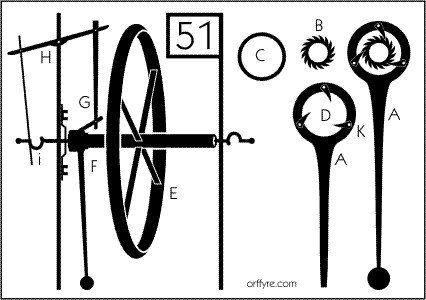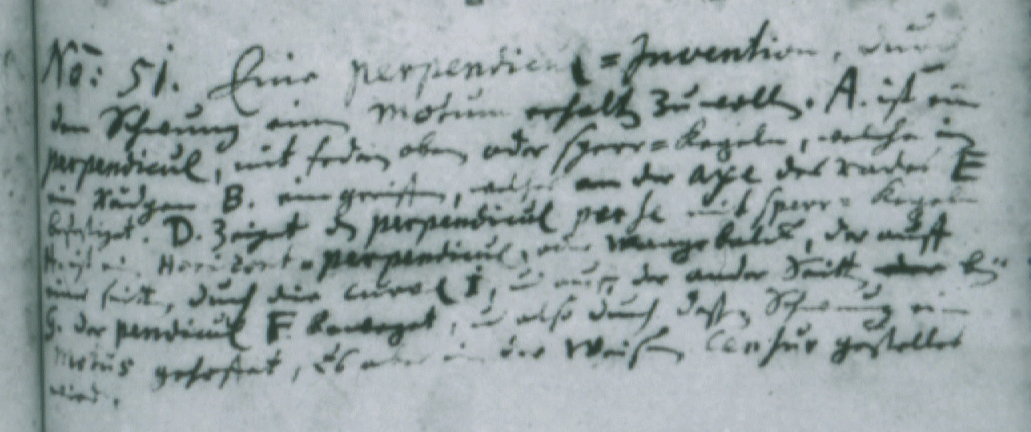Commenting on another topic in another thread the other day reminded me this morning to ask the community about the MT51 comments ( from Bessler, in German ) - I think John Collins could probably shed some light to aid my investigation, and/or dax or jb may have some relevant input etc, to clear this up ..
Background .. JC's original MT collection ( hard copy booklet ) was first published in 2007 - IIRC he said in the forwards that the original translations came to him thru Glenn Rouse, who sourced them from Andrew Witter, who had done the painstaking translations of very difficult writing to read ( I think we can all agree on that ) .. what I had noticed from time to time was that in the later e-book format the last sentence of the MT51 comments had been changed, what I consider significantly on face value - and that piqued my interest on how and why it got changed, and what is the word for word translation of the last sentence ? - now there may be no significant change at all in meaning but as part of my investigation I would like all opinions regarding this perhaps irrelevant "anomaly" ? ..
IIRC JC said he had made some alterations to the Andrew Witter translations where he thought it was appropriate and I'm sure that was just house-keeping and readability inspired - so perhaps it was his changes or maybe someone else offered a more accurate translation that I don't remember happening ? ..
Anyhoo .. the last sentences for both the original hard copy and the later digital version seem at variance ( in meaning ) to me - and I'd like to clear up what exactly the last sentence of the MT51 comments actually say accurately, if you can help ? ..
The best picture of the comments in question I have is the one below that I made yesterday from JC's MT digital version ( much thanks ) ..
...............

...............

...............
Detail .. below are the relevant translations from my files ..
John Collins wrote:ACKNOWLEDGEMENTS
The original notes attached to each drawing were painstakingly read and translated by Andrew Witter, to whom I owe a debt of gratitude for taking the trouble to pore over some barely legible documents to extract the meaning. Over a period of several months I have made some alterations and corrections to his translations, where I felt that they were due. I hope that these will in no way detract from the impressive work he has done, and that he will forgive me for making these changes. Doubtless further improvements will, in time, be made to my own efforts. There are, I am sure, more errors contained within these words but hopefully they are minimal as far as understanding the intent of the original author, Johann Bessler. I should also thank Glenn Rouse for informing me of Andrew Witter’s work and for providing facsimiles of a number of original Bessler documents, complete with English translations also done by Andrew Witter.
John Collins wrote:Maschinen Tractate
The following pictures originate from sketches drawn by Johann Bessler and they are reproduced in their original condition so as to avoid undue omissions through the enhancing process. Digitally enhanced versions of these drawings can be found at www.orffyre.com. I have, however, added a few comments and added enlargements of pictures where I thought it useful. My comments appear in italics...
...............Further demonstrations regarding the possibility and impossibility of perpetual motion.
N.B. 1st May, 1733. Due to the arrest, I burned or hid all the woodcuts that prove the possibility. However, I have left all demonstrations and experiments since it would be difficult for anybody to see or learn anything about a perpetual motion from them or to decide whether there was any truth in them because no illustration by itself contains a description of the motion; however, taking various illustrations together and combining them with a discerning mind, it will indeed be possible to look for a movement and, finally to find one in them'.
2007 Hard Copy .. No. 51 This is a perpendicular invention, which is meant to maintain motion by means of oscillation. A is a pendulum with springs at the top, or pawls, which catch in a small ratchet wheel B, which is fastened to the axle of wheel E. D, shows the pendulum with pawls by itself. H is a horizontal pendulum, or balance beam, which is moved by the crank I. on one side and the pendulum F, and by means of G on the other side. Thus by swinging of the pendulum, a motion is effected but in a faulty manner.
Later e-version .. No. 51 This is a perpendicular invention which is meant to maintain motion by means of oscillation. A is a perpendicular with stoppers, or stop-cones, at the top which catch in a small wheel B. A fastens onto the wheel E. D show the perpendicular per se with stop-cones. H is a horizontal perpendicular, or beam of a balance. H moves by means of the curved implement I on the one side and the perpendicular F at G on the other side. Motion by means of the oscillation of H is expected, but the invention is wisely criticized.
...............




